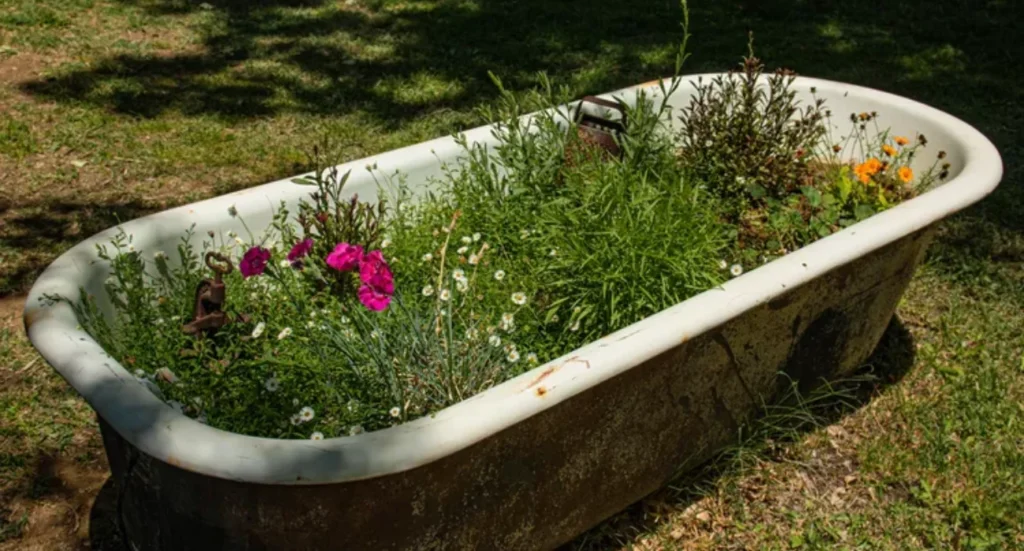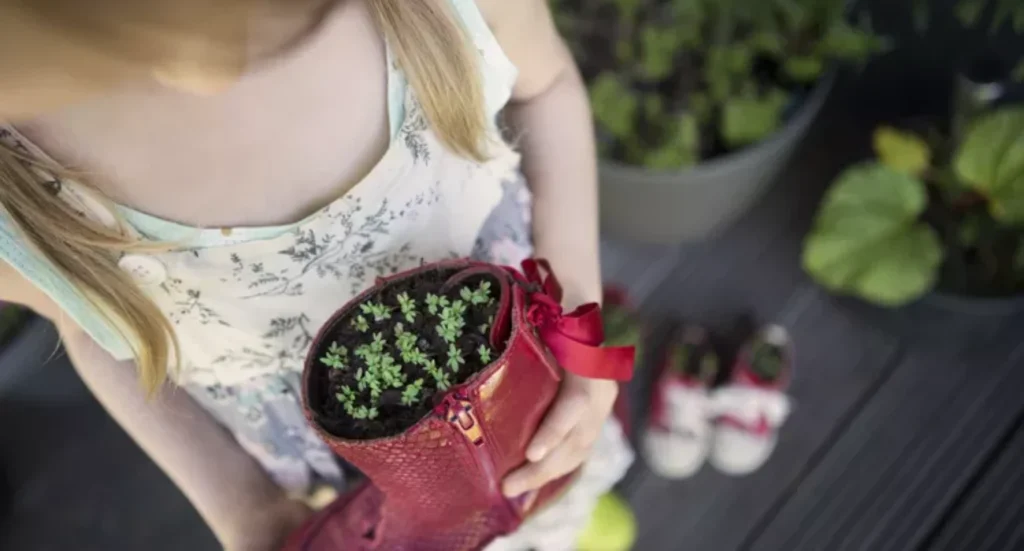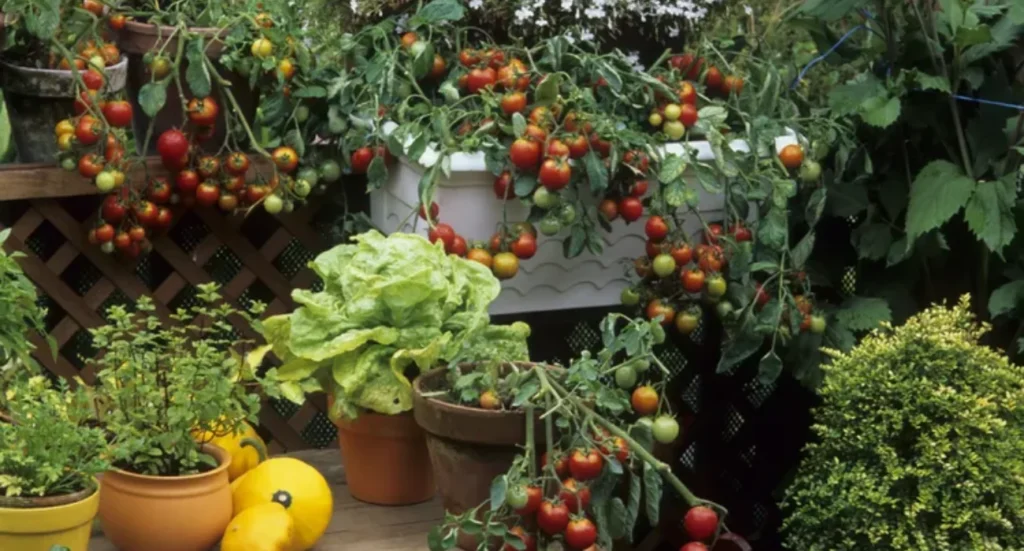Have you ever stood in your small balcony or tiny backyard, dreaming of growing your own fresh vegetables and beautiful flowers? The frustration of limited space doesn’t have to crush your gardening dreams. Sustainable container gardening offers a solution that not only maximizes your growing potential but also protects our planet for future generations.
Many urban dwellers turn to container gardening as their gateway into the world of homegrown food and flowers. Yet, what starts as an eco-conscious choice can quickly become an environmental burden if we’re not careful about our approach. The plastic containers, chemical fertilizers, and peat-based soils commonly used in traditional container gardening create a hidden environmental cost that contradicts our green intentions.
Container gardening doesn’t have to compromise your values or harm the environment. With the right knowledge and approach, you can create a thriving garden that nurtures both your plants and the planet.
Why Sustainable Container Gardening Matters More Than Ever
The popularity of container gardening has exploded in recent years, especially among city dwellers and gardening newcomers. This growing trend brings both opportunities and challenges for environmental stewardship.
Traditional container gardening often relies on resource-intensive materials and practices. Plastic containers derived from fossil fuels, peat-based growing media harvested from critical ecosystems, and synthetic fertilizers all contribute to environmental degradation. The sustainable gardening movement addresses these concerns by offering alternatives that work with nature rather than against it.
Eco-friendly container gardening goes beyond simply growing plants in pots. It encompasses water conservation, waste reduction, soil health, and creating closed-loop systems that minimize external inputs while maximizing productivity.
Building Your Sustainable Water Foundation

Water management stands as the cornerstone of any successful sustainable container garden. Container plants require more frequent watering than their ground-grown counterparts, making efficient water use essential for both plant health and environmental responsibility.
Rainwater collection transforms your property into a water-harvesting system. Installing gutters with downspouts connected to storage barrels or tanks captures precious rainwater that would otherwise flow away unused. This free water source reduces your reliance on municipal water systems while providing plants with the naturally soft water they prefer.
The beauty of rainwater harvesting lies in its simplicity. A basic rain barrel system can supply hundreds of gallons of water throughout the growing season. For larger operations, connecting multiple barrels or investing in larger tanks multiplies your water storage capacity.
Drip irrigation systems powered by gravity from your rainwater collection maximize water efficiency. These systems deliver water directly to plant roots, minimizing evaporation and reducing water waste by up to 50% compared to traditional watering methods.
Nourishing Your Plants the Natural Way
Fertility management in sustainable container gardening requires a shift from synthetic inputs to natural, homemade solutions. This approach not only reduces environmental impact but also creates healthier soil ecosystems that support robust plant growth.
Composting forms the backbone of sustainable fertility management. Even small spaces can accommodate composting systems through methods like bokashi fermentation, vermicomposting, or compact tumbler systems. These systems transform kitchen scraps and garden waste into nutrient-rich soil amendments.
Creating your own liquid fertilizers from common household items provides targeted nutrition for your plants. Compost tea, made by steeping finished compost in water, delivers beneficial microorganisms and nutrients directly to plant roots. Similarly, liquid fertilizers made from banana peels, coffee grounds, or fish emulsion provide specific nutrients without the environmental cost of commercial fertilizers.
Leaf mold creation offers another excellent fertility source. Autumn leaves, collected and composted separately, break down into a rich, soil-like amendment that improves water retention and provides slow-release nutrients throughout the growing season.
Choosing Containers That Align With Your Values

The containers you choose for your garden make a significant environmental statement. Moving away from new plastic containers toward sustainable alternatives reduces your carbon footprint while often providing superior growing conditions for your plants.
Natural materials like terracotta, clay, and wood offer excellent alternatives to plastic containers. These materials provide better breathability for plant roots, naturally regulate soil temperature, and add aesthetic appeal to your garden space.
Upcycling and repurposing common household items creates unique, cost-effective containers while keeping materials out of landfills. Food containers, old boots, damaged pots and pans, and even discarded appliances can become productive growing spaces with proper drainage modifications.
The key to successful container selection lies in understanding your plants’ needs and matching them with appropriate container characteristics. Deep-rooted vegetables require tall containers, while shallow-rooted herbs thrive in wider, shorter spaces.
Creating Healthy Growing Medium Without Compromising Ecosystems
The growing medium you choose directly impacts both plant health and environmental sustainability. Avoiding peat-based products protects vital carbon-storing ecosystems while supporting your plants’ growth needs.
Peat alternatives provide excellent growing conditions without the environmental cost. Coconut coir, composted bark, and other organic materials offer similar water retention and aeration properties while supporting sustainable harvesting practices.
DIY potting mix creation allows complete control over your growing medium composition. A simple recipe combining equal parts quality loamy soil, homemade compost, and leaf mold creates an excellent foundation for most container plants. This mixture provides balanced nutrition, proper drainage, and beneficial microorganisms essential for plant health.
Customizing your growing medium for specific plants optimizes their growing conditions. Acid-loving plants benefit from additional pine needles or coffee grounds, while Mediterranean herbs prefer sandier, well-draining mixtures with added perlite or small stones.
Maximizing Space and Productivity
Vertical gardening techniques multiply your growing space without expanding your footprint. Trellises, hanging baskets, and tiered container systems allow you to grow more plants in the same square footage while creating visually appealing garden displays.
Companion planting in containers mimics natural plant relationships to improve growth and pest resistance. Pairing tomatoes with basil, carrots with chives, or lettuce with marigolds creates beneficial growing partnerships that maximize productivity while minimizing problems.
Succession planting ensures continuous harvests throughout the growing season. Staggering plantings of quick-growing crops like lettuce, radishes, and herbs provides fresh produce while making efficient use of container space.
Maintaining Your Sustainable System

Long-term success in sustainable container gardening requires ongoing attention to system maintenance and improvement. Regular monitoring of water levels, soil health, and plant performance helps identify potential issues before they become problems.
Crop rotation in containers prevents soil depletion and reduces pest and disease pressure. Moving plants to different containers each season helps maintain soil fertility and breaks pest life cycles naturally.
Seed saving from your healthiest plants creates a closed-loop system that reduces dependence on external seed sources while preserving varieties adapted to your specific growing conditions.
Common Mistakes to Avoid
New sustainable container gardeners often fall into predictable traps that compromise their environmental goals. Purchasing unnecessary plastic containers, using chemical fertilizers for quick fixes, and neglecting water conservation all undermine sustainability efforts.
Overcrowding containers reduces air circulation and increases disease pressure, leading to plant failures that waste resources. Proper spacing allows plants to reach their full potential while maintaining healthy growing conditions.
Ignoring seasonal changes in container gardens can lead to plant stress and poor performance. Adjusting watering schedules, moving containers to optimize light exposure, and protecting plants from extreme weather ensures year-round success.
Seasonal Sustainability Strategies
Spring preparation involves refreshing growing media, planning crop rotations, and preparing water collection systems for the growing season. This foundational work ensures smooth operations throughout the growing period.
Summer maintenance focuses on water conservation, pest management using natural methods, and continuous harvesting to maintain plant productivity. Regular observation and gentle intervention prevent small problems from becoming major issues.
Fall activities include seed collection, compost preparation, and container winterization. These tasks prepare your garden for the dormant season while setting the stage for next year’s success.
Winter planning allows time for reflection on the previous season’s successes and challenges while planning improvements for the coming year. This quiet period enables thoughtful decision-making about container selection, crop choices, and system modifications.
Frequently Asked Questions
Q: How much money can I save with sustainable container gardening?
A: Sustainable container gardening can reduce your gardening costs by 60-80% compared to traditional methods. By making your own compost, collecting rainwater, and upcycling containers, you eliminate most ongoing expenses while producing higher-quality results.
Q: Is container gardening really as productive as ground gardening? A: Yes, container gardening
A: Yes, container gardening can actually be more productive per square foot than ground gardening when properly managed. The controlled environment allows for intensive planting, season extension, and optimal growing conditions that often exceed ground garden yields.
Q: What’s the biggest mistake beginners make in sustainable container gardening?
A: The most common mistake is trying to do everything at once instead of building systems gradually. Start with basic water collection and composting, then expand your sustainable practices as you gain experience and confidence.
Your Green Growing Journey Starts Now
Sustainable container gardening offers an accessible path to environmental stewardship while providing fresh, healthy food for your family. The techniques and principles outlined here create a foundation for gardening success that benefits both your household and the broader environment.
The transition to sustainable practices doesn’t happen overnight, but each small step contributes to a larger positive impact. Whether you’re starting with a single herb container on a windowsill or planning an extensive balcony garden, the principles remain the same: work with nature, minimize waste, and create systems that sustain themselves over time.
Your journey toward sustainable gardening begins with a single container and a commitment to making choices that support both plant health and environmental well-being. The satisfaction of growing your own food using methods that protect our planet creates rewards that extend far beyond the dinner table.
Article Focus: This evergreen content provides comprehensive guidance for environmentally conscious gardeners who want to grow their own food and flowers in containers while minimizing environmental impact. The article maintains the original content’s essence while expanding on practical applications and long-term success strategies.

